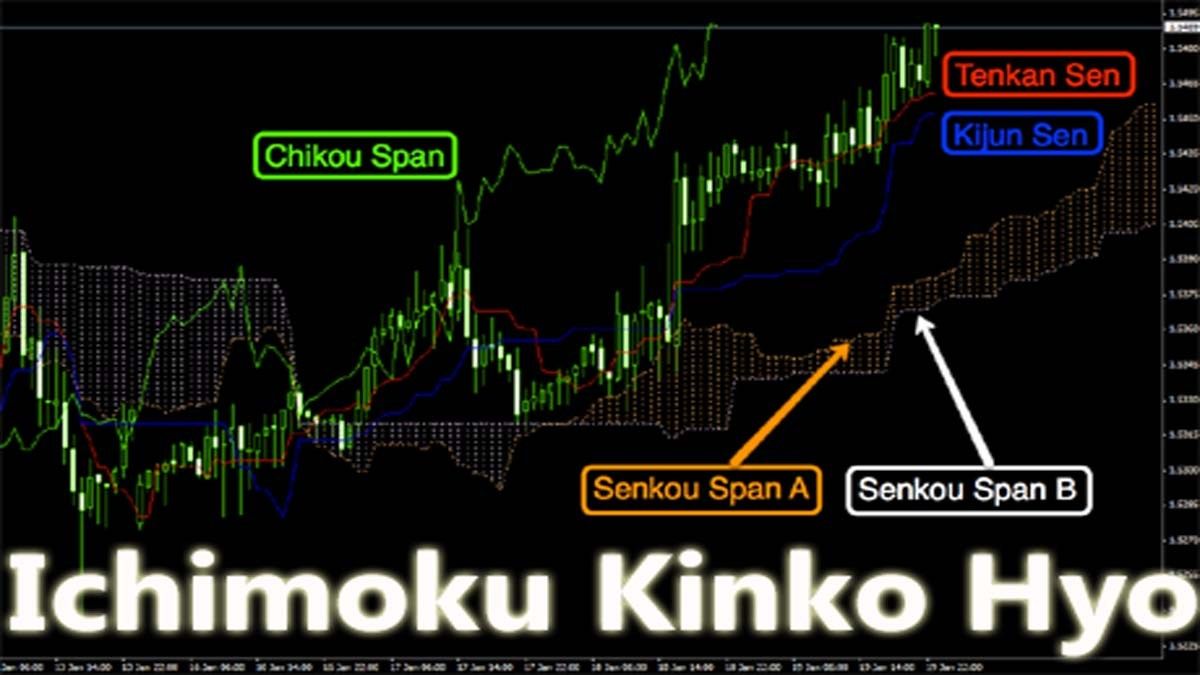5 Comprehensive Ichimoku Kinko Hyo Forex Strategies
Stocks and Forex Day Trading or Swing Trading Simplified using Advance Ichimoku Kinko Hyo, Trading Strategies with Risk Control.
Overview
What you’ll learn – Ichimoku Kinko Hyo
- Have a full understanding of a profitable Trading Strategy
- Deep understanding of the Ichimoku Indicator
- Scan trading opportunities with the Ichimoku Indicator
- Understand the best entry and exit points to maximize your profit
- Trade with a solid strategy
- Choose the perfect Time Frame for your Trading
- Immediately recognize Trading opportunities on the Chart
- Place different orders on the Forex market
- Analyze the opportunities in terms of Risk to Reward Ratio
- Understand how the variable 1% Money Management works
- Understand how the 1% of MAX Money Management works
- Analyze the Trend with a Solid Setup.
Requirements
- Basic understanding of Forex or Market Trading
- A computer or laptop
- Desire to learn and achieve your goals!
- A reputable Forex Broker GTCFX for Demo & Real Practices (A suitable broker is recommended in the course resources)
Description
What do you use to understand Financial Markets? Are you adding indicators over indicators and you end up more confused than before?
What if I told you that you can turn one of the most complex indicators into a powerful and easy-to-use weapon to make money trading Financial Markets?
Welcome to Advanced Forex Trading – Ichimoku Kinko Hyo Trading Strategy Explained.
My ultimate goal for this Ichimoku Kinko Hyo course is not to teach you another indicator that you can have on your chart. My goal is to provide you with a logical strategy that you can apply to trade the markets with confidence.
To achieve this goal, we first need to take a look at the Ichimoku Indicator. We will start with an introduction in order to familiarize with the complete indicator, then I will dedicate 4 entire Sections and 12 entire lectures to each component of the Ichimoku Kinko Hyo.
You will not find a pre-packed set of rules to apply blindly, you will understand any single component of the Ichimoku, you will learn any single formula and the reasons why we trade it in a certain way.
This Ichimoku Kinko Hyo course allows you to understand when and how to use the Ichimoku Indicator, being able to differentiate between different market scenarios, finding the best opportunities to trade and make money trading the Forex Market.
Section 8 is entirely dedicated to Forex Market analysis using the whole indicator, so you can start to familiarize with all the techniques and methods that we have studied in the previous sections.
After that, we will have another important part of the strategy: Risk Management.
If you had the chance to enroll in one of my other courses, you know that I like to keep things real. An Ichimoku Kinko Hyo strategy that helps only to analyze the market, without having a deep focus on Stop Loss and Take Profit, is not a complete strategy for me.
So, my promise is to give you a complete strategy with a whole Section about Entry and Exit points, in order to understand how to open and manage your trades.
As usual, when I publish a new course, I also open a new Live Forex Trading Account with real money to publish live trades in the course and update the results with the strategy.
In addition, in the live trading section, you will also find info about all the brokers that I use or have used in the past, so you will have my personal feedback for each one in case you want to create a new account to trade the Forex Market.
Almost all the examples provided in the Ichimoku Kinko Hyo course are about Forex Trading, but I am confident that you will find the material very useful for other Financial Markets, like Stock Trading, Cryptocurrency Trading and many others.

What else in this Ichimoku Kinko Hyo course? Here are 5 comprehensive Ichimoku Kinko Hyo Forex strategies that you can implement in your trading.
- You will learn from my 11+ years of experience.
- You have unlimited lifetime access at no extra costs.
- You can always ask for help; my support is well known in Udemy.
I like to say to my students that signing up for this course is like signing up for a gym membership. You have all the equipment, all the machines and a personal trainer ready to help you, but if you stay home, eating chips and watching television, you are not going to see any result, right? So, take your first step. Enroll in the course and let’s start this journey together.
See you at the top 🙂
Who this Ichimoku Kinko Hyo course is for:
- Anyone who wants a step-by-step strategy to start trading in the Forex market
- Anyone who is interested in creating an income with online Forex Trading
- Traders who want to enhance their Forex knowledge and skill-set
- Traders who are still struggling to recognize the beginning of a new trend
- Anyone who is looking for a proof that Forex Trading can give you Financial Freedom
- Traders who want to discover how to analyze the market with a logical approach
Curriculum
Curriculum
- 2 Sections
- 9 Lessons
- Lifetime
- INTRODUCTION4
- ICHIMOKU KINKO HYO COURSE5





